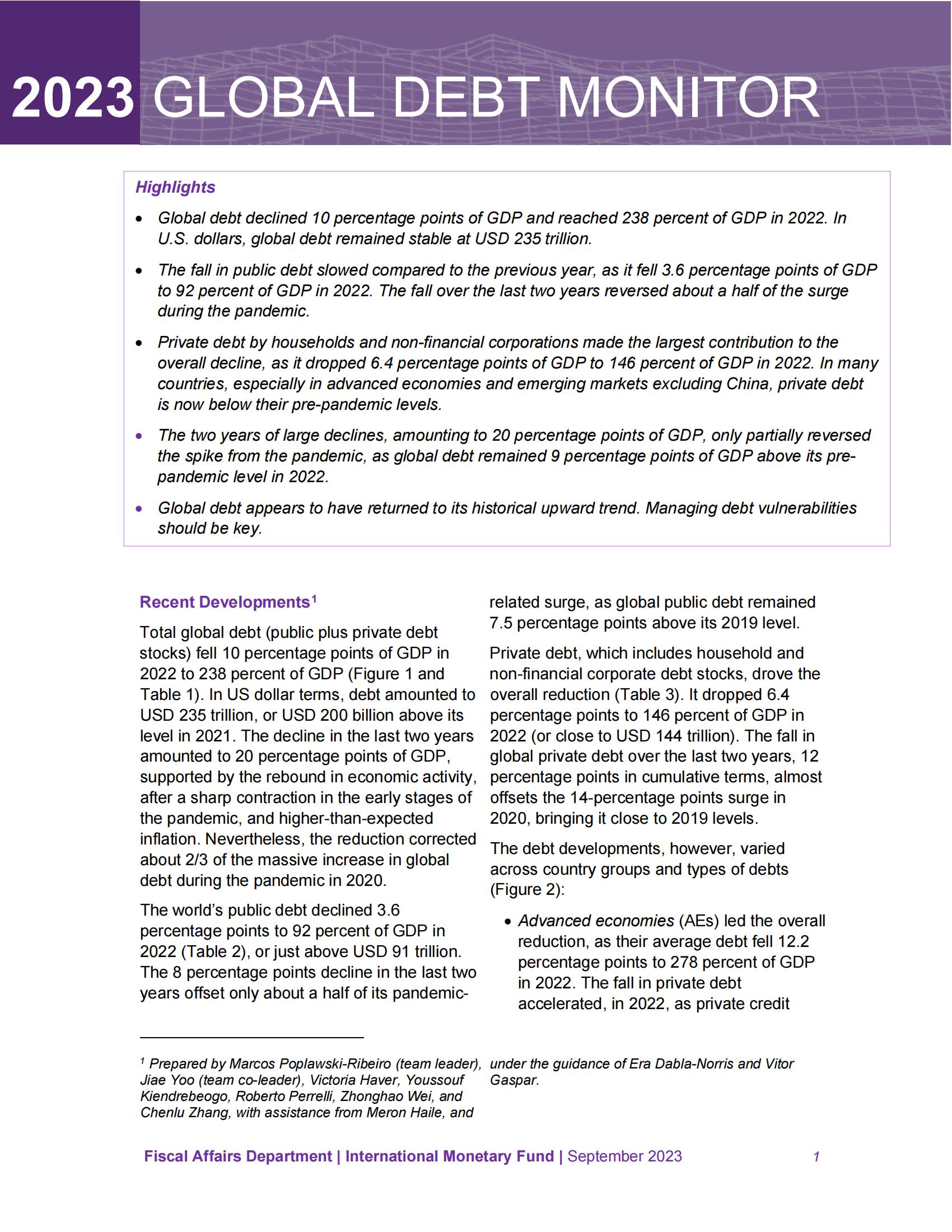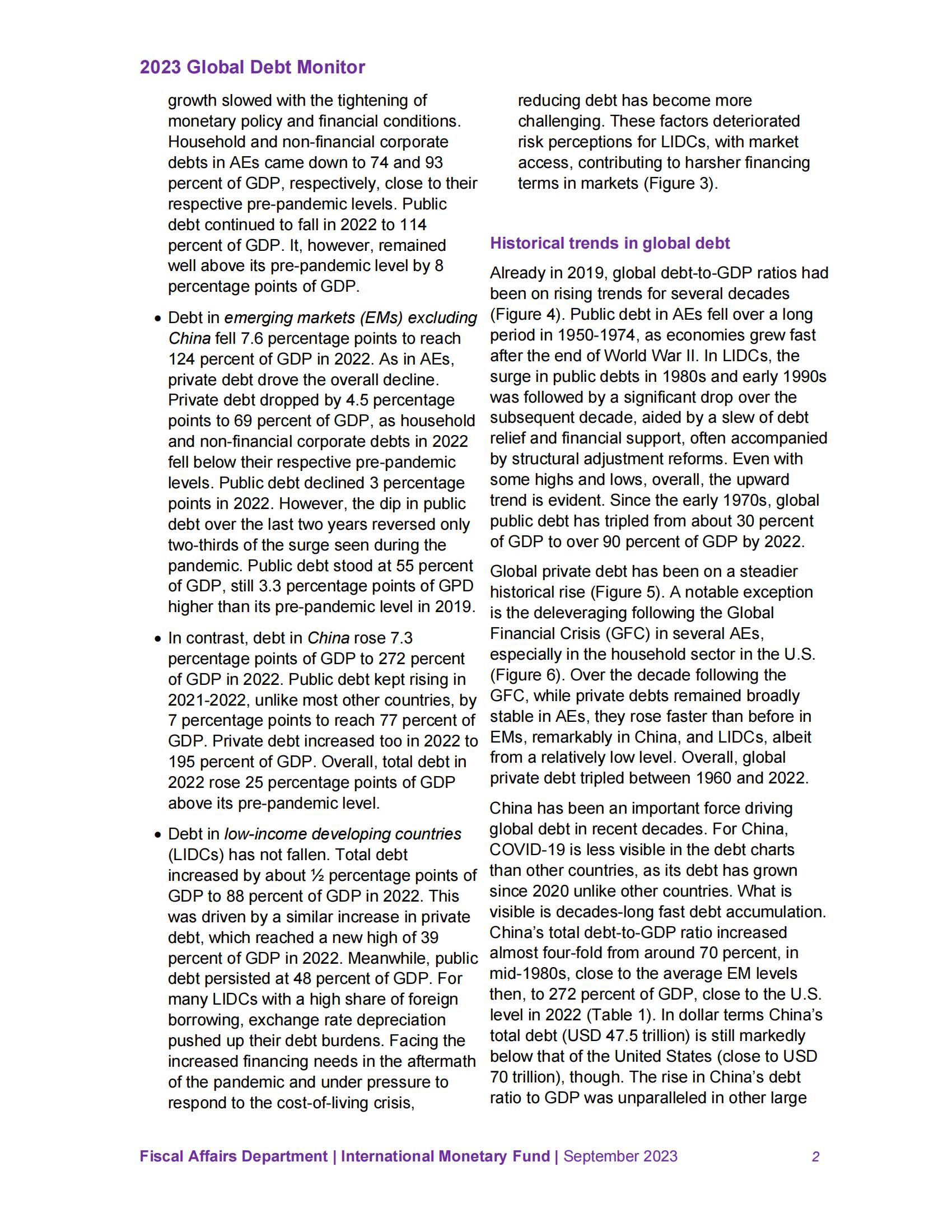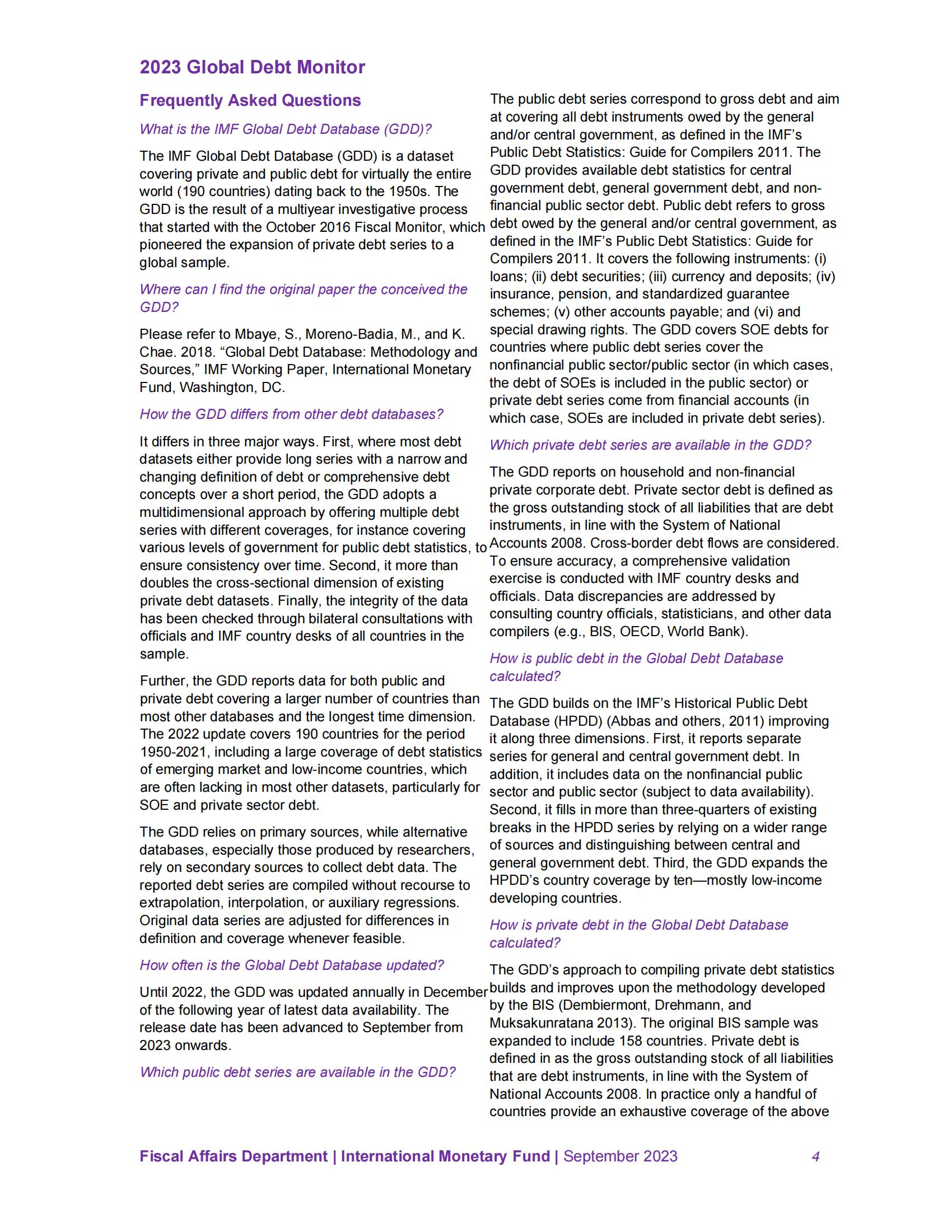growth slowed with the tightening of
monetary policy and financial conditions.Household and non-financial corporatedebts in AEs came down to 74 and 93
percent of GDP, respectively, close to theirrespective pre-pandemic levels. Publicdebt continued to fall in 2022 to 114percent of GDP. It, however, remainedwell above its pre-pandemic level by 8percentage points of GDP.
· Debt in emerging markets (EMs) excluding
China fell 7.6 percentage points to reach
124 percent of GDP in 2022.As in AEs,private debt drove the overall decline.Private debt dropped by 4.5 percentagepoints to 69 percent of GDP, as householdand non-financial corporate debts in 2022fell below their respective pre-pandemiclevels. Public debt declined 3 percentagepoints in 2022. However, the dip in publicdebt over the last two years reversed onlytwo-thirds of the surge seen during thepandemic. Public debt stood at 55 percentof GDP,still 3.3 percentage points of GPDhigher than its pre-pandemic level in 2019
· In contrast, debt in China rose 7.3
percentage points of GDP to 272 percentof GDP in 2022.Public debt kept rising in
2021-2022,unlike most other countries, by7 percentage points to reach 77 percent ofGDP. Private debt increased too in 2022 to195 percent of GDP. Overall, total debt in2022 rose 25 percentage points of GDPabove its pre-pandemic level.
· Debt in low-income developing countries(LIDCs) has not fallen. Total debt
increased by about /% percentage points ofGDP to 88 percent of GDP in 2022.Thiswas driven by a similar increase in privatedebt, which reached a new high of 39
percent of GDP in 2022.Meanwhile, publicdebt persisted at 48 percent of GDP.Formany LIDCs with a high share of foreignborrowing, exchange rate depreciation
pushed up their debt burdens. Facing the
increased financing needs in the aftermath
of the pandemic and under pressure to
respond to the cost-of-living crisis,



本文来自知之小站
报告已上传知识星球,微信扫码加入立享4万+深度报告下载及1年更新。3天内不满意退出星球款项原路退回,欢迎试用。到期续费仅需5折
(如无法加入或其他事宜可联系zzxz_88@163.com)
